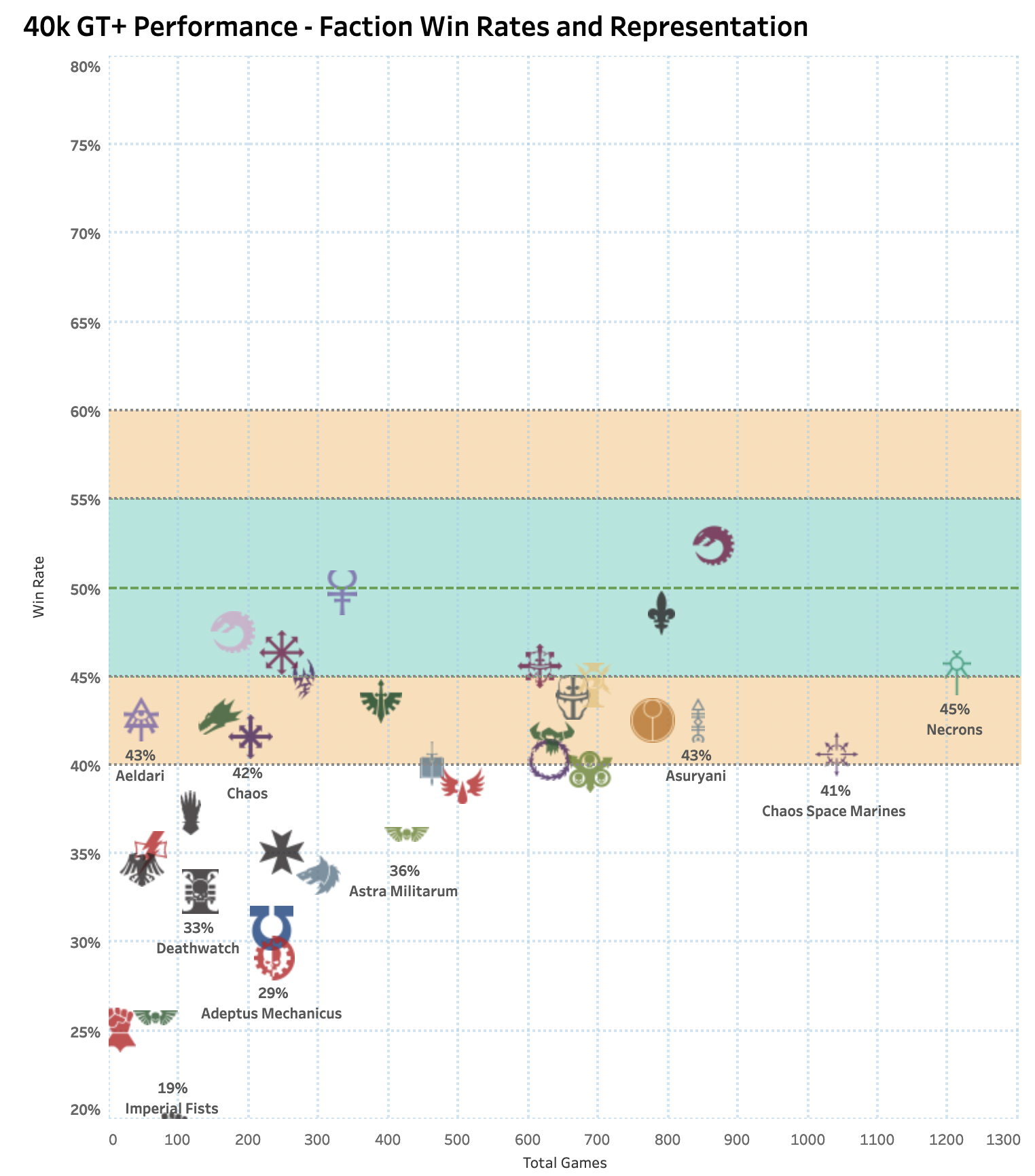Today’s 40k MetaWatch video was great. Here’s what we’re excited about.
Author: Cliff Thomas
Man, what a shift in approach from previously described (even in the same day!) approaches to game balance. Today’s 40k Metawatch video was a refreshing glimpse into the behind-the-scenes work of the 40k Design studio. A few choice quotes:
Actually, we don’t really want to know how well, I dunno, Orks were doing two years ago, when buggies were a thing and everyone was super-excited about those kinds of army lists. We’re really look at the last 50, 100 days of rolling data, to try to keep it relevant.
This seems self-explanatory, but its nice to hear GW saying it out loud - performance in the most recent iteration of the meta (mission pack, codex releases, etc.) is the most relevant data when considering any rules changes. We’re a few thousand games into the Nephilim post-Chaos Daemons era - one hopes that they’re paying closest attention to that subset of games with overall Nephilim performance not far behind.
The other tool that most people will be familiar with is the Balance Dataslate. That’s a quarterly tool that we deploy, where we look at those armies that are overperforming for some reason, we might make some changes to them…and actually armies - probably more importantly for us - armies that are kind of underperforming, and we’ll make some changes to those too, give them a boost.
This has been a hot (and I think correct) take from a few people across the various data channels in some 40k Discords - as important as it is to bring the Leviathan Nids and Light Harlequins of the world down to earth, it’s arguably more important to bring up the Ad Mechs, the Astra Militarums, and the Core Codex Space Marines. There are a LOT of players with models languishing in closets at the moment, and whatever can be done get the myriad models currently on hiatus back on tables is a step in the right direction.
Is it as simple as a change to a rule, or is it actually to do with how this unit, interacts with this other unit, that interacts with this stratagem, than interacts with this other thing…and what you might be able to do, is knock one brick out of that particular structure, and suddenly all of those things are fine.
This sort of scalpel-analagous approach is likely the answer the majority of the time in a game as complicated as Warhammer 40k. There is so much potential for unintended knock-on effects, even with small changes, so trying to limit the scope and scale of a given change (and iterating quickly after its effects have become clear) is going to be the best approach.
There might be armies where their win rate is really high, but they’re not winning events. But actually, they’re not winning events. Or you might have it the other way around, where you’ve got an army whose win rate is not amazing overall, but they consistently win events because a great player can make them great.
I’m really glad that this particular point of analytical nuance made it into the video. There is a demonstrable performance gap between relatively inexperienced players and those in the upper decile of competitive experience. As an example, here we have the post-Nephilim performance of "Casual" players from our GT+ dataset - these are players that have only attending a single GT+ event since February:
Tough times out there (though Tyranids players seem to be doing fine). Compare this with the performance of “Veterans” - the 8% of players in our data that have attended 4 or more GT+ events:
There might be a few people out there that have figured Deathwatch out, but newbies (like myself) are having a tougher go. Sample sizes are small, but in the aggregate there’s a clear case here.
All in all, the video describes a much, much more sophisticated approach to data analysis and rules design than what we've previously seen from the 40k team. This is good!
Here’s the concern - we have no idea which version of GW’s design approach we’re going to get in the upcoming dataslate, or in the next few codex releases. Do we get the thoughtful, sophisticated approach described in this video, or do we get the wishy-washy broad approach described in the article? Do we get codex designers that produce strong, but balanced, work like the latest Chaos Demons book, or do we get the unmitigated baseline power of release Tyranids and Leagues of Votann?
It’s hard to say. But this video tells us that, at minimum, GW knows how to approach balance issues. Now they just have to stick the landing.
Buff Corvus Blackstars. Do to Creations of Bile what was done to Dark Saedath. My Flamers of Tzeentch are almost all assembled - they should probably get a point increase.
As always, happy hobbying and good luck with your games!


